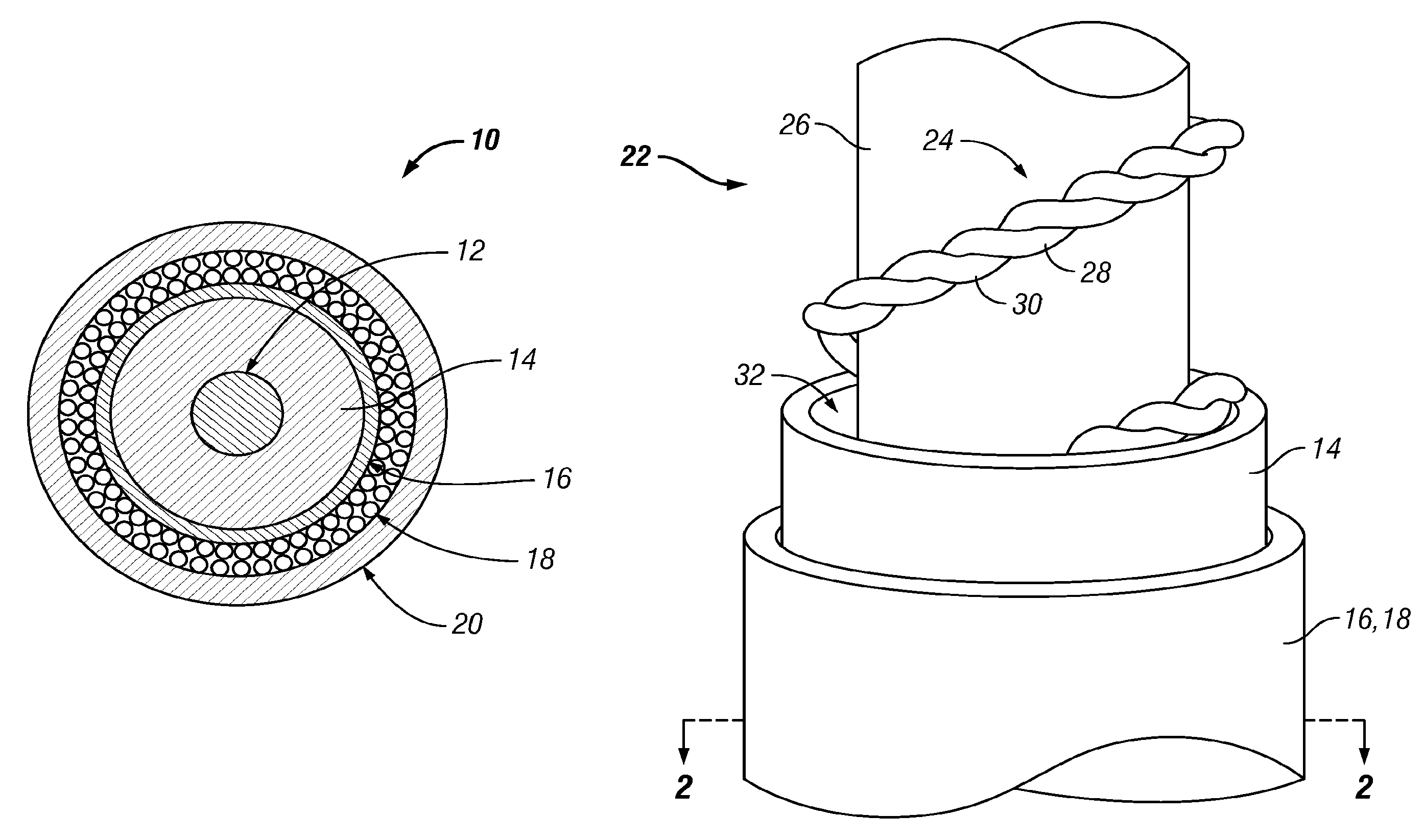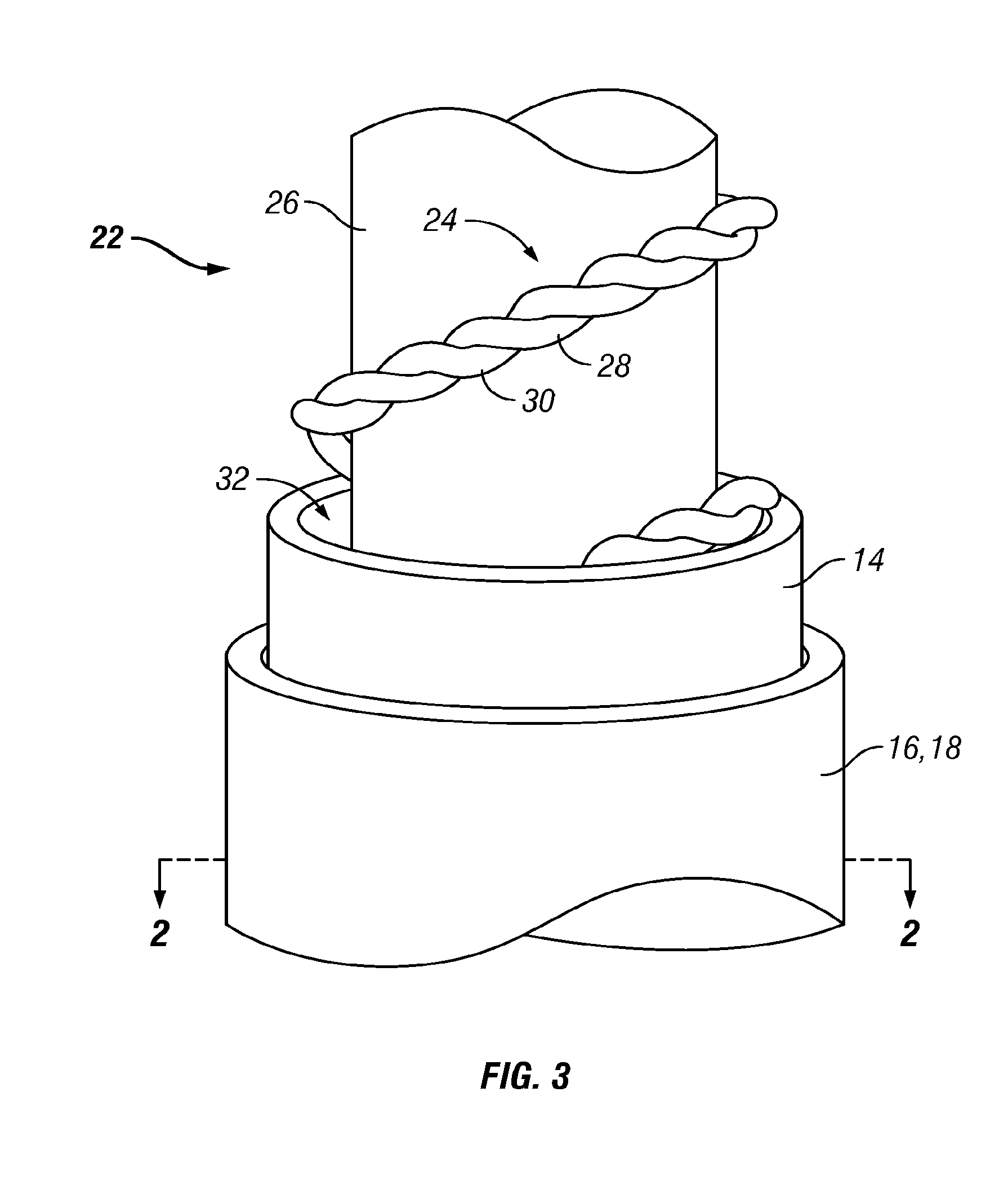Ultra high-speed coaxial cable
a high-speed, coaxial cable technology, applied in the direction of insulated conductors, power cables, cables, etc., can solve the problems of inability to melt, difficult to produce ptfe insulators with high dimensional tolerances, and the thickness of ptfe insulators may vary significantly, etc., to achieve low dissipation factor, easy manufacturing, and low dissipation factor
- Summary
- Abstract
- Description
- Claims
- Application Information
AI Technical Summary
Benefits of technology
Problems solved by technology
Method used
Image
Examples
example 1
FIG. 1
[0035]Central conductor: 24 AWG, 0.0201″ silver-plated copper[0036]Dielectric insulator: High-purity FEP, 0.066″+0.001″ OD[0037]Inner shield: Helically overlapped, flat, silver-plated copper[0038]Braid shield: 40 AWG silver plated copper, >90% coverage[0039]Overall shield diameter: 0.086″ nominal[0040]Outer jacket: FEP, 0.0075″ wall thickness[0041]Impedance: 50±1Ω[0042]Capacitance: 29 pF / ft[0043]Overall diameter “D”: 0.101″±0.005″
[0044]FIG. 4 shows a comparative graph of the insertion loss (in dB) of equivalent coaxial cables but with different dielectric insulators, as a function of frequency (in Hz). In this context, insertion loss (also known as attenuation) is a measure of the overall decrease in transmitted signal power through a coaxial cable, which results from radiation losses, resistive losses in the conductor, line terminations, losses in the dielectric insulator, etc. Insertion loss is characterized as the ratio of the signal power received by the load (PR) to the p...
PUM
| Property | Measurement | Unit |
|---|---|---|
| dissipation factor | aaaaa | aaaaa |
| impedance tolerance | aaaaa | aaaaa |
| frequencies | aaaaa | aaaaa |
Abstract
Description
Claims
Application Information
 Login to View More
Login to View More - R&D
- Intellectual Property
- Life Sciences
- Materials
- Tech Scout
- Unparalleled Data Quality
- Higher Quality Content
- 60% Fewer Hallucinations
Browse by: Latest US Patents, China's latest patents, Technical Efficacy Thesaurus, Application Domain, Technology Topic, Popular Technical Reports.
© 2025 PatSnap. All rights reserved.Legal|Privacy policy|Modern Slavery Act Transparency Statement|Sitemap|About US| Contact US: help@patsnap.com



